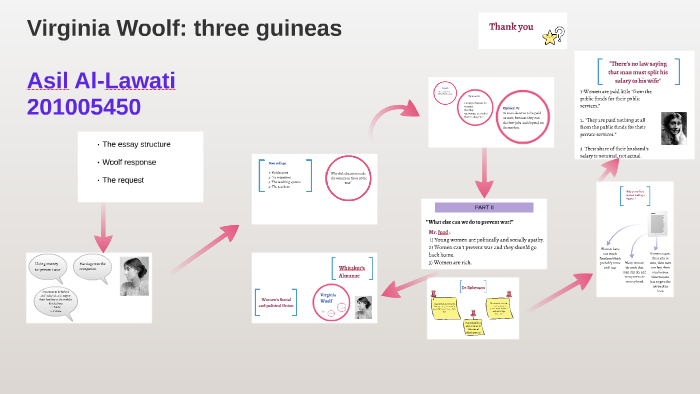

In contrast to the more hopeful Room, which culminates in Woolf’s famous exhortation to her women readers to revive the “dead poet who was Shakespeare’s sister,”1Three Guineas is rife with anxieties. Like A Room of One’s Own, written a decade earlier, Three Guineas is centrally concerned with the material conditions of space and economy that govern women’s contributions to the public sphere. On 2 June 1938 the Hogarth Press published Virginia Woolf’s feminist-pacifist polemic Three Guineas.

The paper seeks for the need of freeing the body of female from the fixed roles attached to it and thus shatters the phallocentric limitations imposed on female sex in context to war, education, marriage and profession. The paper explores the distinct perspective of female writer who is trying to present the differences and similarities of both the sexes by comparing their current role in different spheres of social and political framework. The writing done by the female writer, on topics, usually associated with the male sex, (on the basis of the hegemonic ideology) creates a new type of ideology that comment on the attributes attached to a body and in what sense the stereotypical notions of prevalent ideology put limits on that body to follow certain set of attributes. She confers the freedom of an educated man’s son with the limitation imposed on the daughter of the same educated class man. Virginia Woolf considers both the sexes and emphasizes the differences in the manner in which a male, from a patriarchal social order looks at war and a female of the same strata perceive it. Virginia Woolf’s Three Guineas, highlights the themes of profession, war, marriage, education and the response of the writer towards these heads firstly from the perspective of male hegemonic ideology and subsequently moans the discussion towards the female perception.


 0 kommentar(er)
0 kommentar(er)
